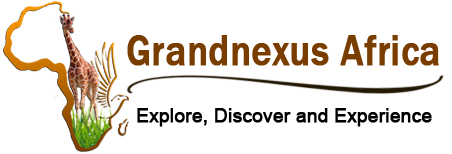The Katonga Wildlife Reserve is located in western Uganda within Kyenjojo and Kamwenge Districts, along the river banks of Katonga.
It is 4-3 hours’ drive from Kampala Uganda’s largest capital city to Kyegegwa Town Council. While at Kyegegwa turn southwards for 42 km following well visible sign posts. Many of the species of plants and animals in the reserve are unique to its wetland environment.
Katonga Wildlife Reserve covers an area of 207 sq.km and was gazetted in 1964 as a game reserve, to serve as a corridor for migrating wildlife from Western Uganda to Tanzania and Sudan.
It became a Wildlife Reserve in 1996 when the former Game Department and Uganda National Parks merged to form Uganda Wildlife Authority (UWA), the government body that manages all the protected and unprotected natural areas. It’s recently managed by UWA under the Kibale Conservation Area administration with a Warden In-Charge based at the Reserve Head Office at Kikorogoto.
This wildlife Reserve contains different vegetation types like grasslands, wooded grasslands, woodlands, riverine woodlands, swamp, riverine grasslands, and papyrus. Most of the area is mixed savannah with acacia or woodland. However, large portions of the reserve are either permanent or seasonal wetlands. The reserve also contains various pockets of riverine and tropical forests.
Its unique geographical location among forests, swamps and savannah vegetation gives the protected area a diverse ecosystem that favours the existence of a variety of animal species. The most dominant plant species include Sporobolus festivus and Chloris gayana. These species exist with associate species like Setaria species, Hyparrhenia species and occasional Panicum maximum.
Katonga wetland system is interlinked with the Nile system forming an important wetland system for human survival. The variety of different vegetation types, particularly the wetlands, provides a range of habitats, which enhances the faunal diversity of the reserve.
Katonga Wildlife Reserve has a viable Situating population inhabiting the Katonga Wetland System. The reserve also harbours high population of waterbucks, Hippos and birds plus numerous primates like Monkeys, chimpanzees that may escape from Kibale forest.
Early 1960s, katonga wildlife reserve was home to a various animals including the zebra, topi and eland, but today these unique species are no longer seen in the reserve. Elephant, buffalo, waterbuck, bushbuck, reedbuck are residents in the reserve, years between 1971 and 1985, most of the wildlife was killed through commercial and subsistence poaching. The reserve was also heavily encroached by cultivators and cattle keepers, however all the encroachers in the park were evicted in 2014.
Uganda wildlife authority successfully Tran’s located 60 impalas and 5 zebras to Katonga wildlife reserve in order to rise and increase the population of animals for the purpose of boosting wildlife tourism in the country.
The population of impalas is now 300 and 150 birds including wetlands, savannah and forests species. There are other animals in the reserve include Black and White Colobus Monkey, the River Otter, and Olive Baboon, Uganda Kob, Waterbuck, Leopard, Buffalo, reedbuck, bushbuck and duiker and chevrotain. The reserve is also home to various reptiles, amphibians with butterflies in the forest.

